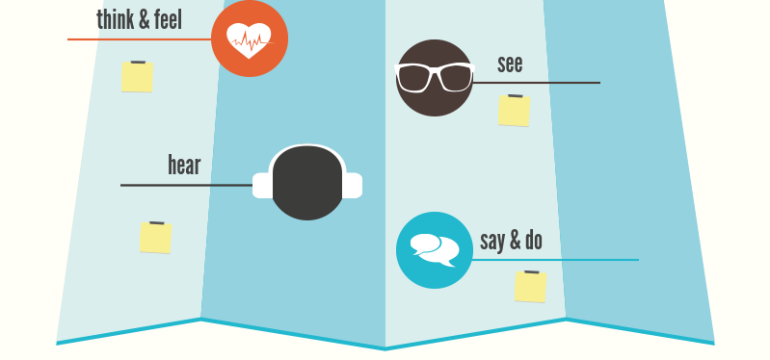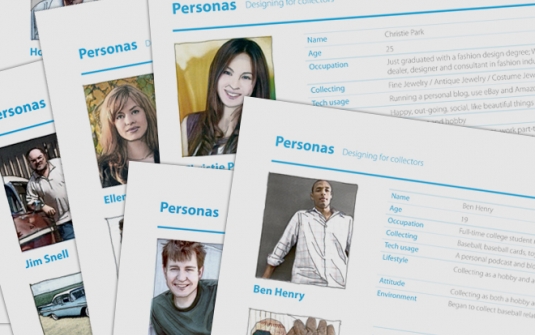
Design Thinking As A Strategy.
September 15, 2016
Design Thinking – Empathy Maps
October 3, 2016Personas are fictional representations of our users helping us design with greater clarity and understanding. Usually, they’re concise enough to fit on a large flash card, even with a picture included. It’s also good to know that when we talk about a Persona, we may be referencing either that simple written document or the fictional person himself.So why talk about a fictional person at all?
Well, personas are an element, or artifact, of our user research. Design Thinking tells us to make the user our north star and that we should constantly ask questions and find answers about them.
- Who are they?
- What are they trying to do?
- Why are they trying to do it?
In fact, there are so many questions early on in projects that we must dedicate time to research. We have to get out of the office and observe and interact with our users.
We’ve probably spoken to the buyer but have we spoken to the people who actually use our products or services everyday?
Are we sure John can use this application with one hand while drinking a cup of coffee? Would John, a private person, want everyone to know what she was working on?
Why doesn’t this Dashboard show detailed results? Well because our Persona only wants to know that the work is compliant so she can get back to what really matters to her.Personas also help us ensure project alignment.
Over a course of releases or client engagements there may be many contrasting opinions on how to solve a problem. Personas change those conversations from being about our own personal opinions to being about the goals, motivations, and desires of our user.
This is a profound way well-considered Personas help us achieve our mission of making the user our north star.Now,the challenge with Personas is that in order for them to work we need to make them relevant, robust,and memorable.
When a Persona is mentioned, you should have a strong and immediate reaction. The Persona’s name should evoke an image and emotion in your head. It should contain relevant information but shouldn’t be dry.
For this reason, a Persona cannot live in a spreadsheet.
It could, however, live as a page in an illustrated storybook. As you research you will look for common goals and motivations across your users and add them to your Persona. But don’t be lured into settling for generalities. Your Persona cannot be vague and generic.
You must envision and describe a specific fictional person in great detail so when you design for that person you’ll actually be able to help real users.
It’s good to remember that as with most things in Design Thinking Personas are never perfect. There is no set amount of time you should spend on them, and no hard and fast rules for what they should look like.
Try to iterate on them a few times, and I’m positive you’ll know when they’re ready. If you’re not quite there yet, you can always come back later and tweak them
as necessary.





